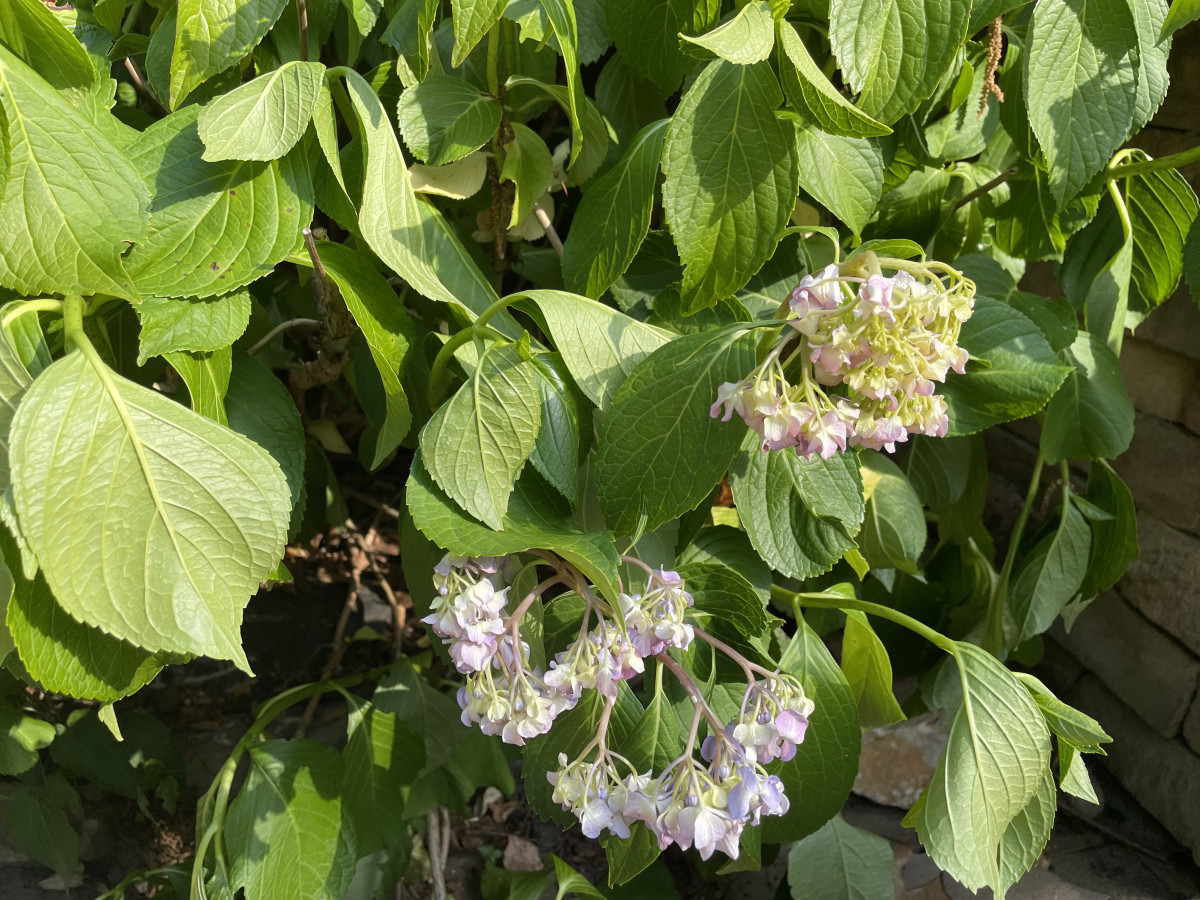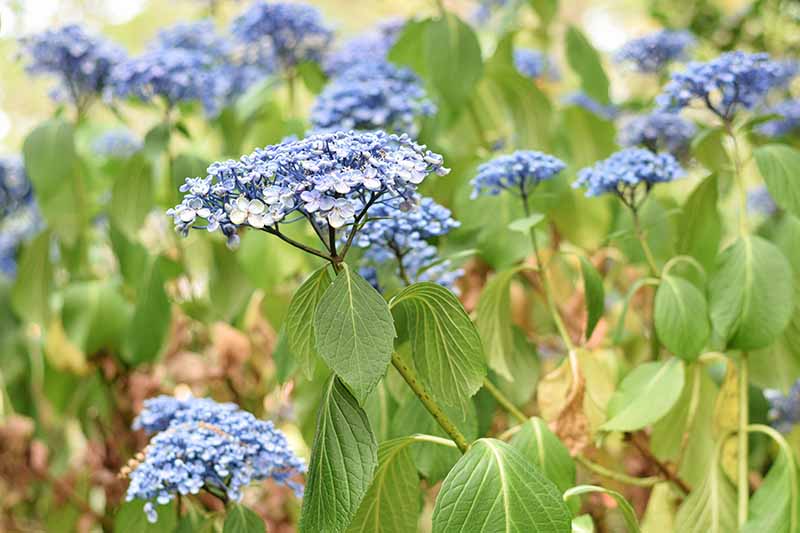Why Are My Hydrangeas Drooping
Why Are My Hydrangeas Drooping?
Hydrangeas are beautiful flowering shrubs that can add a touch of elegance to any garden. However, if your hydrangeas are drooping, it can be a sign of a problem. There are a number of reasons why hydrangeas might droop, but the most common causes are:
- Not enough water: Hydrangeas need regular watering, especially during hot, dry weather. If your hydrangeas are not getting enough water, their leaves will wilt and the stems may droop.
- Too much sun: Hydrangeas prefer partial shade to full sun. If your hydrangeas are in full sun, they may wilt during the hottest part of the day.
- Too much fertilizer: Hydrangeas do not need a lot of fertilizer. If you fertilize your hydrangeas too often, or with too much fertilizer, it can cause the leaves to yellow and the stems to droop.
- Root rot: Root rot is a fungal infection that can damage the roots of hydrangeas. If your hydrangeas have root rot, the leaves will wilt and the stems may droop.
- Winter damage: Hydrangeas that are not hardy in your climate may be damaged by winter cold. If your hydrangeas have been damaged by winter, the leaves may wilt and the stems may droop.
If you notice that your hydrangeas are drooping, the first step is to identify the cause of the problem. Once you know the cause, you can take steps to correct it.
- If your hydrangeas are not getting enough water, water them deeply and regularly. In hot, dry weather, you may need to water your hydrangeas every day.
- If your hydrangeas are in too much sun, move them to a location with partial shade. If you cannot move your hydrangeas, you can try to provide some shade for them during the hottest part of the day by planting taller shrubs or trees nearby.
- If you think you may have overfertilized your hydrangeas, flush the soil with water. To do this, water your hydrangeas with a solution of one part water to four parts vinegar.
- If your hydrangeas have root rot, you may need to dig them up and replant them in fresh soil. You can also treat the root rot with a fungicide.
- If your hydrangeas have been damaged by winter, you may need to prune them back. Prune the dead or damaged stems back to healthy tissue.
With a little care and attention, you can usually revive drooping hydrangeas. However, if your hydrangeas are severely damaged, they may not recover.
If you're wondering why your hydrangeas are drooping, you're not alone. Hydrangeas are beautiful flowers, but they can be finicky. There are a few reasons why your hydrangeas might be drooping, including:
- Not enough water. Hydrangeas need moist soil, but they don't like to sit in water. Water your hydrangeas deeply once a week, and more often if the weather is hot or dry.
- Too much sun. Hydrangeas prefer partial shade. If your hydrangeas are getting too much sun, their leaves will wilt and their flowers may fade. Move your hydrangeas to a spot where they'll get morning sun and afternoon shade.
- Not enough fertilizer. Hydrangeas need a balanced fertilizer, such as 10-10-10. Fertilize your hydrangeas in the spring and fall.
- Disease or pests. If your hydrangeas are drooping and you've ruled out the above causes, it's possible that they have a disease or pest problem. Inspect your hydrangeas for signs of pests or disease, and treat accordingly.
If you're not sure what's causing your hydrangeas to droop, or if you're not sure how to fix the problem, you can visit for more information. The website has a wealth of information on hydrangea care, including articles on hydrangea drooping.
FAQ of hydrangea drooping
- Why are my hydrangeas drooping?
There are a few possible reasons why your hydrangeas might be drooping. The most common reason is that they are not getting enough water. Hydrangeas need to be watered deeply and regularly, especially during hot, dry weather. If you live in an area with sandy soil, you may need to water your hydrangeas more often.
Another possible reason for drooping hydrangeas is that they are not getting enough sunlight. Hydrangeas need at least 6 hours of sunlight per day to thrive. If your hydrangeas are in a shady spot, they may not be getting enough light to support their growth.
Finally, drooping hydrangeas can also be a sign of a nutrient deficiency. Hydrangeas need a balanced fertilizer to produce their beautiful blooms. If you have not fertilized your hydrangeas in a while, they may be lacking in nutrients.
- How can I make my hydrangeas less droopy?
If your hydrangeas are drooping due to lack of water, the best solution is to water them more deeply and regularly. You should also make sure that they are planted in well-draining soil. If your hydrangeas are in a shady spot, you can try moving them to a sunnier location.
If you think that your hydrangeas may be suffering from a nutrient deficiency, you can fertilize them with a balanced fertilizer. You should follow the directions on the fertilizer label to determine how much and how often to fertilize your hydrangeas.
- Can I save drooping hydrangeas?
In some cases, you may be able to save drooping hydrangeas. If the drooping is caused by lack of water, you can often revive the plants by watering them deeply. If the drooping is caused by a nutrient deficiency, you can often revive the plants by fertilizing them.
However, if the drooping is caused by a more serious problem, such as root rot or a pest infestation, you may not be able to save the plants. If you are not sure what is causing your hydrangeas to droop, it is best to consult with a gardening expert.
- What can I do to prevent hydrangeas from drooping?
The best way to prevent hydrangeas from drooping is to provide them with the proper care. This includes watering them deeply and regularly, planting them in well-draining soil, and fertilizing them with a balanced fertilizer. You should also inspect your hydrangeas regularly for pests and diseases and treat any problems promptly.
- How do I revive wilted hydrangeas?
If your hydrangeas have wilted, you can often revive them by submerging them in water for a few hours. This will help to rehydrate the plants and perk up their blooms. You can also try making a vertical slit in the stem of each wilted bloom and holding it upright in boiling water for about 60 seconds. This will help to seal in the moisture and revive the blooms.
Image of hydrangea drooping
- Image 1: A hydrangea bush with large, drooping flower heads. The leaves are also starting to wilt.

- Image 2: A close-up of a single hydrangea flower head that is drooping. The petals are starting to turn brown.

- Image 3: A hydrangea plant in a pot that is drooping. The soil in the pot is dry.

- Image 4: A hydrangea bush that is drooping in the hot sun. The leaves are wilted and the flower heads are starting to close up.

- Image 5: A hydrangea bush that is drooping after being watered. The leaves are starting to perk up, but the flower heads are still drooping.

Post a Comment for "Why Are My Hydrangeas Drooping"